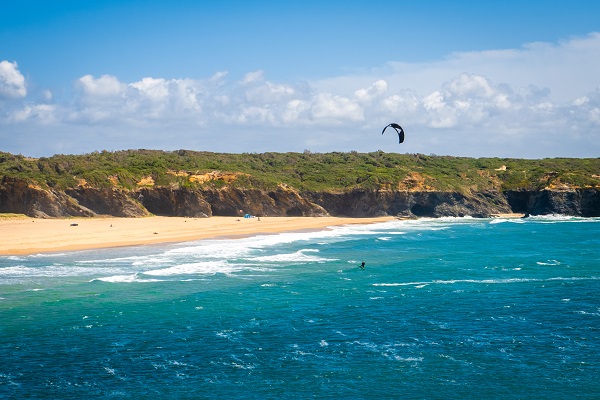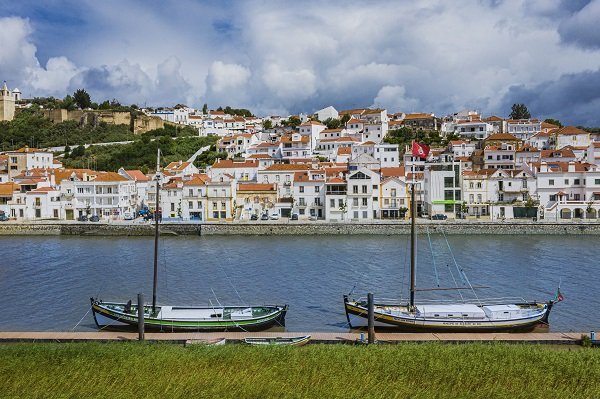The work world has changed — and with new paradigms comes the need to pick up and work in a place where stress, traffic and worries can melt away — all you need is good WIFI, and a place in the sun. Portugal has ranked high on the list for landing pads for digital nomads, people who work remotely — living a nomadic and carefree lifestyle.
Where to go? Well, Portugal has been at the top of so many lists as the right place for a digital nomad. Now, new legislation allows for visas for digital nomads to live and work in Portugal for up to a year, and avoid double taxation. That should be well received by North Americans, as the number of Americans who moved to Portugal jumped by almost 50% — drawn by the safety, culture, mild climate, excellent health care and lower cost of living. In fact, more than10.9 million American workers now see themselves as digital nomads, an increase of 50% over 2019.
The Alentejo is a perfect digital nomad destination, with its lively small cities, a wonderful Atlantic coast, and vast blue skies. There is a very good network of rail and bus to access almost every corner, WIFI access is readily available, but there are other key factors too. The Alentejo is one of the safest parts of one of the safest countries in the world. Food, dining and lodging cost much less than in bigger, more crowded cities. Every town or city is walkable, and offers a welcoming local population. The climate is mild and dry. It is just an hour from Lisbon and borders Spain. In fact, the Alentejo is made up of cork forests, vineyards and olive groves. When not at work one can be discovering the traditional cuisine and delicacies as simple as dipping bread in local olive oil, sampling local wines and exploring natural reserves and more than 85 miles of Atlantic coastline.
4 Places to Find Yourself
The seaside town of Vila Nova de Milfontes sits in the middle of the Alentejo Atlantic coast. Set on the estuary of the Rio Mira, Milfontes is close to some amazing beaches. Well preserved, it has an old-world charm with lots of squares and cafes, not to mention a year round vibe. The old town is crowned by the Forte de São Clemente, a 16th century fortress. Below, the local fishing fleet is anchored in the harbor. Even at the peak of summer the population is just 50,000, mostly families and Portuguese - making this town pleasant and welcoming. While English is spoken, the food is local, and there are no "pub” themed eateries. Off season, visitors come from around Europe to enjoy warm dry days on the protected beaches, dine on fresh fish, and enjoy the warm hospitality of this sunny town.

Monsaraz has all you seek in a walled medieval village, without the cheap trinket shops and hordes of day trippers. Set on a high hillside, this enchanting town has lots of lodging options, great places to eat and work, and a feeling of being lost in time. The historic walls that wrap Monsaraz guard a welcoming village. This wonderful medieval town has all the amenities of the 21st century, including a lake, easy access to shops and stores nearby and views that seem to never end. Monsaraz offers parking areas outside the walls. And the majority of the town’s cobblestone streets are just for pedestrians. In the main Largo D. Nuno Álvares Square, surrounded by historic buildings, one can work, have a coffee, and just enjoy the sun.
The lively town of Castelo de Vide is set around a castle in the foothills of the Serra de São Mamede. This is the best preserved medieval town in all of Portugal, and well stocked in places to stay, eat, work and explore. The ancient flower-lined cobbled streets are a joy to explore, and find old places, a renaissance fountain and a well-preserved Jewish quarter, with one of the oldest synagogues in Europe. This is a great place to work, explore and meet the laid back and friendly locals.
Lastly, set near Lisbon, not far from the beaches of Comporta, and on the Sado River, Alcácer do Sal has welcomed visitors since ancient times, including Greek, Phoenician and Romans. During the Arab Period, Alcácer was the capital of the Al-Kasser province, and boasted the largest defensive walls on the Iberian Peninsula. Today, from the castle, there are views over the River Sado, and the flowing plains. With a bustling riverfront, today’s Alcácer do Sal has plenty of places to stay, work and hang out. Friendly, busy and relaxed, this city is easy to get to and hard to leave.



